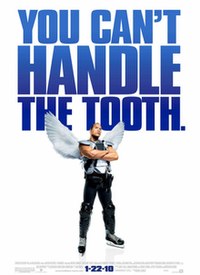January 8, 2010
The Rubik's Cube can be very frustrating and may seem next to impossible to restore to its original configuration. However, once you know a few algorithms, it is very easy to solve.
- The pieces that compose the Rubik's Cube are called Cubies, and the color stickers on the Cubies are called Facelets. There are three types of Cubies :
- the centers (or center pieces), at the center of each face of the Cube. There are 6 of them, each have 1 Facelet.
- the corners (or corner pieces), at the corners of the Cube. There are 8 of them, and each have 3 Facelets.
- the edges (or edge pieces), between each pair of adjacent corners. There are 12 of them and each have 2 Facelets.
- Not all cubes have the same color schemes. The cube used for the illustrations is such that :
- White opposes yellow;
- Blue opposes green;
- Orange opposes red;
- Color scheme is BOY (because the Blue, Orange and Yellow faces are in clockwise order).
- This article uses two different views for the Cube :
- The 3D View, showing three sides of the Cube : The front (red), the top (yellow) and the right side (green). In step 4, the algorithm (1.b) is illustrated with a picture showing the left side of the cube (blue), the front (red) and top (yellow).

- The Top View, showing only the top of the cube (yellow). The front side is at the bottom (red).

-
- For the top view, each bar indicates on which side the important facelet is located. On the picture, the yellow facelets of the top back corners are on the top (yellow) side, while the yellow facelets of the top front corners are both located on the front side of the cube.

- When a facelet is grey, it means that its color is not important for the situation considered.
- The arrows (blue or red), show what the algorithm will do. In the case of the algorithm (3.a) for instance, it will rotate the three corners on themselves as shown. If the yellow facelets are as drawn on the picture, at the end of the algorithm they will be on top.

- The axis of the rotation is the big diagonal of the cube (from one corner to the corner all the way on the other side of the cube).
- Blue arrows are used for clockwise turns (algorithm (3.a)).
- Red arrows are used for counter-clockwise turns (algorithm (3.b), symmetrical to (3.a)).
- For the top view, the light blue facelets indicate that an edge is incorrectly oriented. On the picture, the edges on the left and right are both incorrectly oriented. Which means that if the top face is yellow, the yellow facelets for those two edges are not on the top, but on the side.

- For the move notations, it is important to always look at the cube from the front side.
-

 : Rotation of the front side.
: Rotation of the front side. -




 : Rotation of one of the three vertical rows.
: Rotation of one of the three vertical rows. -




 : Rotation of one of the three horizontal rows.
: Rotation of one of the three horizontal rows.
A few examples of moves :START 








-











0 comments
Post a Comment